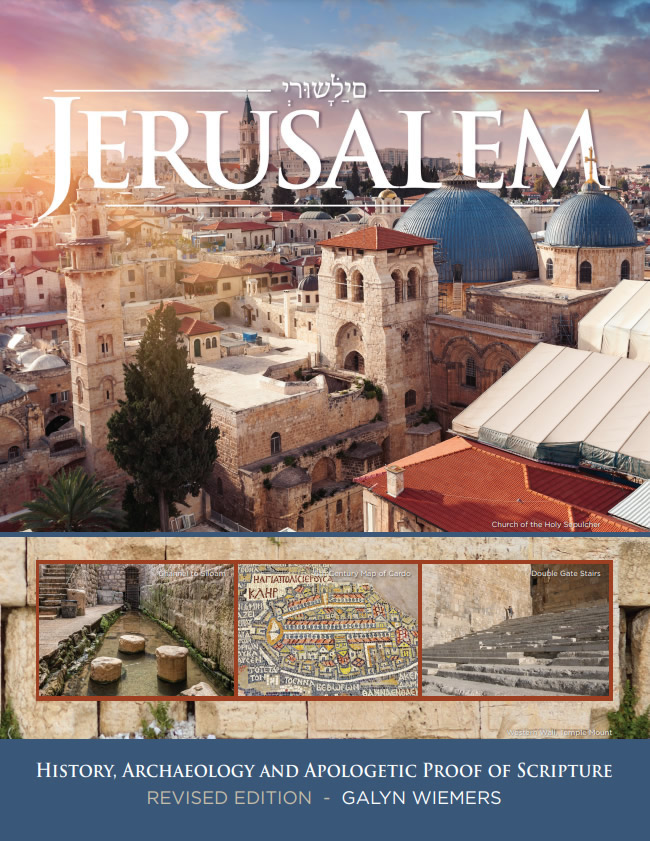7- Archaeological History of Jerusalem |
|||||||||||||
Although he never left the Netherlands, Adriaan Reland (1676-1718), a Dutchman, wrote a detailed geographical survey of Palestine in 1696. Edward Robinson, an American theologian, visited Jerusalem in 1838. He discovered Hezekiah’s Tunnel and the remains of
He then published the first topographical study of the land of Palestine in 1841. The first archaeological dig in Jerusalem took place Charles W. Wilson came to Jerusalem to help improve the water system, but he used this position as a cover to dig tunnels and
In 1867 General Sir Charles Warren began a threeyear period of “undercover” excavation. The Ottoman government prohibited
German Conrad Schick was shown the inscription inside Hezekiah’s Tunnel in 1880 by two young boys. He also discovered a
In 1923 R.A.S. Macalister and J.G. Duncan uncovered the eastern side of the City of David in the area of the Jebusite Tower and From 1961-1967 Kathleen M. Kenyon excavated during the rule of the Jordanians after the war of 1948. She excavated Byzantine
Within a year of the Jews winning the Six Day War, Benjamin Mazar began a ten-year excavation period from 1968 to 1978. He represented
In 1975 Meir Ben Dov excavated from the Dung Gate to the Zion Gate. He uncovered the Nea Church, Herodian residences and a large number of mikvah. Eilat Mazar, the granddaughter of Benjamin Mazar, began excavating in the City of David near the Gihon Spring in 1986. She has recently uncovered David’s Palace (2007) and a wall built by Solomon (2010).
Besides the well-planned archaeological excavations described above there are also accidental excavations and incidental discoveries like the discovery of the tomb of Caiaphas, the High Priest who condemned Jesus. In December of 1990, modern construction equipment was being used south of the City of David in a forested area when the ceiling of an ancient tomb collapsed. Inside the tomb were burial chambers and ossuary boxes still filled with the bones of people from around 20-70 AD. Among the many ossuary boxes were two highly decorated boxes inscribed “Joseph son of Caiaphas” and another inscribed simply “Caiaphas.” In the boxes were bones of several people including the bones of a 60-year-old man who has been identified as the High Priest Caiaphas who condemned Jesus in 30 AD. Josephus writes about this same Caiaphas identified by Matthew, Mark, Luke and John, but Josephus calls him “Joseph Caiaphas” (Jewish Antiquities 18:35) and “Joseph who was called Caiaphas of the high priesthood” (Jewish Antiquities 18:95). Caiaphas was high priest from 18-36 AD. Ossuary boxes were used to hold the bones of a deceased person. The dead body was laid on a stone slab in the tomb for about a year. By that time the body would have decomposed, and the bones were collected and placed in an ossuary box. This box then would have been kept in the tomb along with the ossuary boxes of other family members. Archaeological terrorism in Jerusalem has occurred in the past and continues today. Under Jordanian rule from 1948-1967 a Jewish cemetery with graves dating from the time of Herod’s Temple in the first century was destroyed. Approximately 38,000 graves and tombstones, some from the first century, were smashed or removed for use as paving stones. In addition, recent photos of the Temple Mount indicate that under Muslim control, “Solomon’s Stables” below the southeast side of the Temple Mount have been converted into a mosque. Construction equipment was used to dig up a large area of the Temple Mount and move the stone, debris, and ancient masonry stones to the Kidron Valley. A large stone staircase and entryway down into Solomon’s Stables has been built at the site of the hole dug into the Temple Mount. The construction was completed in 2010, and can be seen in the photos below. The Double Gate Tunnel was also converted to a mosque.
Despite the destruction of historical evidence by archaeological terrorism, much of Jerusalem remains unexcavated because areas of interest lie under residences, holy sites or the Temple Mount itself. The many discoveries made have been fairly recent considering the long 2,000-year history of the city. Today, archaeological breakthroughs are occurring at a more rapid pace and are being processed more accurately than ever before. The historical reliability of the Scriptures continues to be reinforced through archaeology. Each discovery helps us read the pages of the Bible with a greater level of insight and understanding. |
|||||||||||||
|
|||||||||||||
 |
UPDATED! 2022 - |
JERUSALEM: HISTORY, ARCHAEOLOGY AND Download a FREE online .pdf of "Jerusalem" HERE (click on the book cover to download the book as a .pdf ) |
|
|
|
|
|